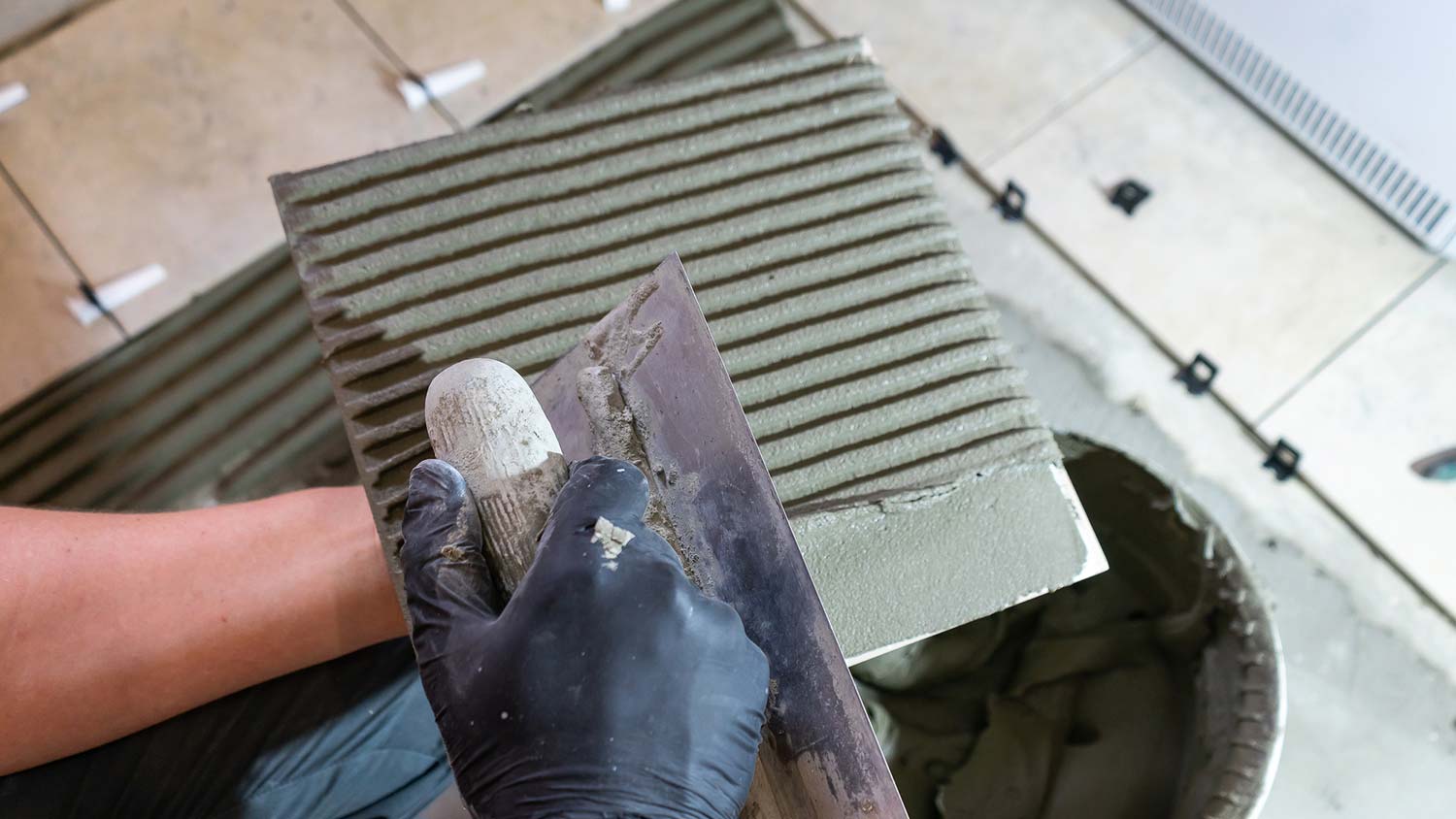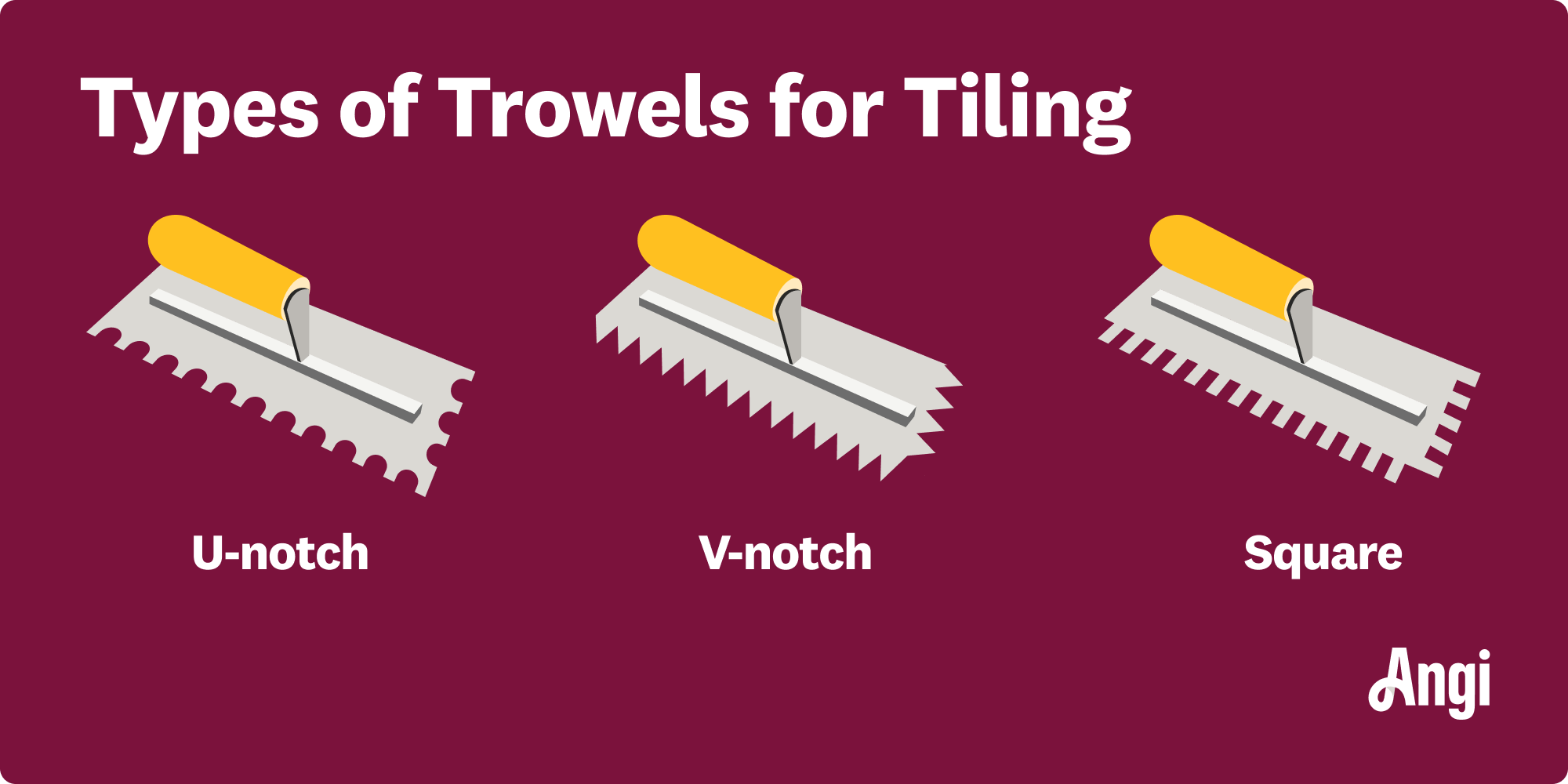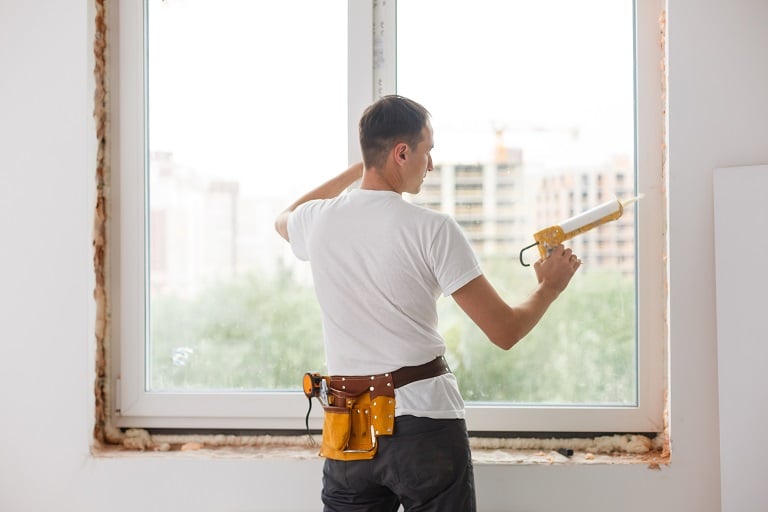
Damaged tiles should be fixed right away. In this guide, find out all of the different factors that affect your tile repair cost.
No need to spread yourself too thin over thinset calculations


How much thinset you need is determined by the tile size.
Match the trowel size and shape to your thinset requirements.
Using premixed thinset is faster but far more expensive.
There are two different thinset types, but one is rarely used
Thinset is the adhesive used to glue tile to walls, and a proper calculation helps you stay under budget and prevent overpurchasing. There are a few steps to calculating how much thinset you need, but by following the guide and using the thinset calculator below, you’ll be able to arrive at a precise number.
Thinset is applied using different trowels designed to control the amount of product spread under each tile. The larger the trowel’s teeth, the deeper the grooves. For example, small tiles applied to smooth surfaces may only need a thinset layer 1/9 inch deep. This only requires a small trowel. Heavy tiles require a much thicker layer of thinset—1/4 inch or more—and a much larger trowel.
The table below is a general guide to help you estimate how many pounds of thinset to purchase. We recommend purchasing heavier, unmixed bags and mixing them yourself, as premixed thinset is much more expensive.
| Square Footage of Tiled Area | 1/9" Thinset Thickness | 1/4" Thinset Thickness |
|---|---|---|
| 10 | 7 lbs. | 18 lbs. |
| 20 | 13 lbs. | 36 lbs. |
| 40 | 27 lbs. | 73 lbs. |
| 80 | 53 lbs. | 145 lbs. |
| 120 | 80 lbs. | 215 lbs. |

When calculating how much thinset you need, start with the square footage and tile size. Once you know the tile size, consult the directions on the bag or product website where it tells you the coverage rate based on the trowel size. Common trowel sizes are 1/4 inch, 3/8 inch, and 1/2 inch.
A simple-to-follow order of operations is to:
Determine your total square footage you’ll be tiling
Decide which tile size to use
Find the coverage rate on the thinset you plan on using
Use the thinset calculator
Thinset requirements (in pounds) = (Area in square feet / bag coverage) x 1.08
The 1.08 at the end of the formula is a waste coefficient. This assumes you have no experience mixing and applying thinset. If you do—or believe you can work cleanly—change that number to 1.05.

Thinset application is determined by the tile you’re using. Thicker, larger tiles require more thinset to be added to the substrate—the wall you’re attaching the thinset to—and the larger the trowel needs to be. Determining the right trowel size is key to your tiles adhering properly.
There is another consideration: the trowel shape. There are U-notch, V-notch, and square trowels. U-notch trowels spread the least amount of thinset, then V-notch, with square leaving the most thinset on the substrate.
| Tile Size in Inches | Trowel Size in Inches | Trowel Shape |
|---|---|---|
| 4 | 1/4x1/4 | V-notch |
| 4–8 | 1/4x1/4 | Square |
| 8–16 | 1/4x3/8 | U-notch or square |
| 16+ | 1/2x1/2 | U-notch or square |
There are two types of thinsets: modified and unmodified. The vast majority of home projects will use a modified thinset since it contains polymers like latex that add elasticity and strength to the cured paste. Modified thinset also shrinks much less than unmodified, leading to less cracking.
You might be wondering when it’s a better idea to use unmodified. If you plan on applying the thinset to an impervious surface, use unmodified since it requires moisture to cure.
From average costs to expert advice, get all the answers you need to get your job done.

Damaged tiles should be fixed right away. In this guide, find out all of the different factors that affect your tile repair cost.

Discover the cost to regrout shower, including average prices, key cost factors, and tips to help you budget for a fresh, watertight shower.

You're planning a bathroom remodel, but how much will it cost to retile your bathroom? Read this guide to find out.

Find out the differences, pros, and cons of grout versus mortar so you can choose the right one for your next project.

Adding bullnose tile to your bathroom design can create a finished look and protect the tile edge. But what is bullnose tile and where can you use it?

Many home improvement projects require caulk, but if you’re a new DIYer, you may not be familiar with this versatile product. So, what is caulk? Let’s explain.